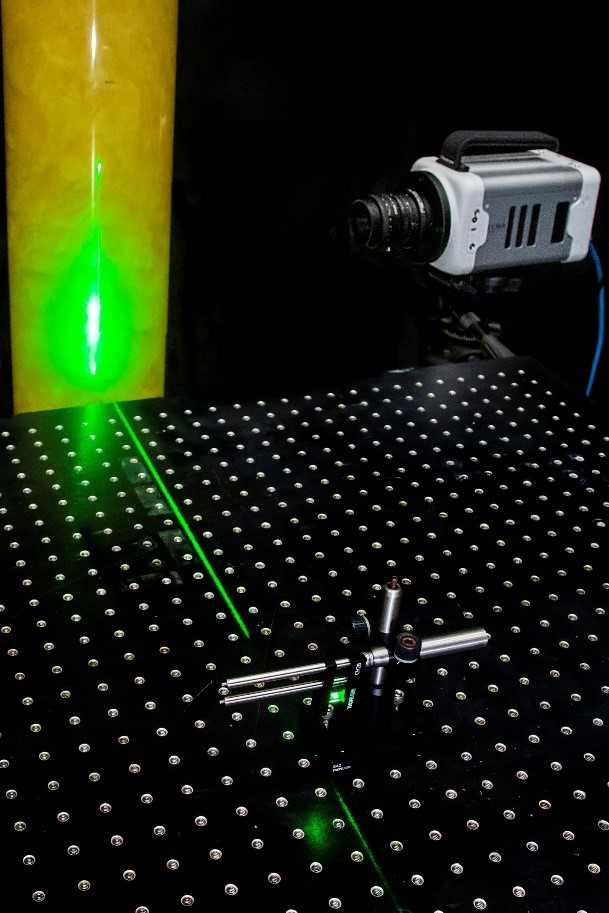Gathering visual data from pressurized vessels, downhole energy production, and other hard-to-visualize locations poses several challenges to fluid dynamics analysis. Southwest Research Institute has developed advanced flow visualization tools for understanding complex fluid and thermal systems by applying computer vision and data science to fluid dynamics. Our image-processing and machine-learning capabilities provide advanced flow visualization and rapid data analysis with few resource requirements.
Flow Visualization Techniques & Applications
SwRI has extensive experience in several types of flow visualization techniques including optical high-speed imaging, digital microscopy, planar laser induced fluorescence (PLIF) and particle image velocimetry (PIV). Institute engineers are advancing flow visualization by applying custom and enhanced measurement techniques for large-scale, high-velocity, high-pressure and high-temperature testing programs for industries including:
- Oil and Gas
- Automotive
- Aerospace and Defense
- Environmental and Climate
- Space Science
- Food Processing
- Biomedical and Medical Devices
Fluid Flow Visualization & Analysis

SwRI uses planar laser induced fluorescence (PLIF) for fluid flow visualization and analysis.
SwRI’s advanced fluid flow visualization and analysis services include developing custom and tailored diagnostic tools, testing procedures, and solutions to improve the performance of thermo-fluid and other mechanical systems, independent and data-driven assessment of existing or novel fluid flow technology at field-like conditions, and characterization of single and multiphase phenomena in flow systems.
This capability was previously impossible using traditional measurement methods inside of flow loop piping and custom test setups. These approaches provide accurate and relevant results when quantifying or characterizing the following: liquid droplet sizing in high-pressure piping for multiphase flows, transient three-phase mixture density characterization inside of riser piping, determining material loss of field ready equipment from fluid and particle erosion, slip velocity over different material surfaces, foam stability and degradation by characterizing gas and droplet coalescence, and liquid propellant migration behavior in microgravity.
For more information about fluid and thermal dynamics scientific computing, please contact Seth Nelson at +1 210 522 3312.
